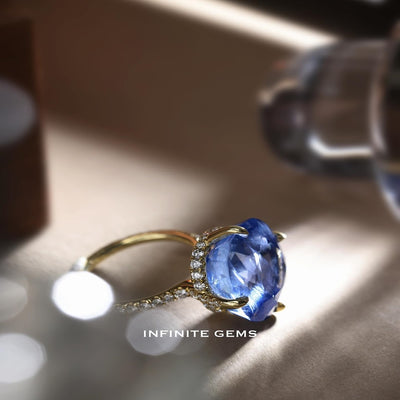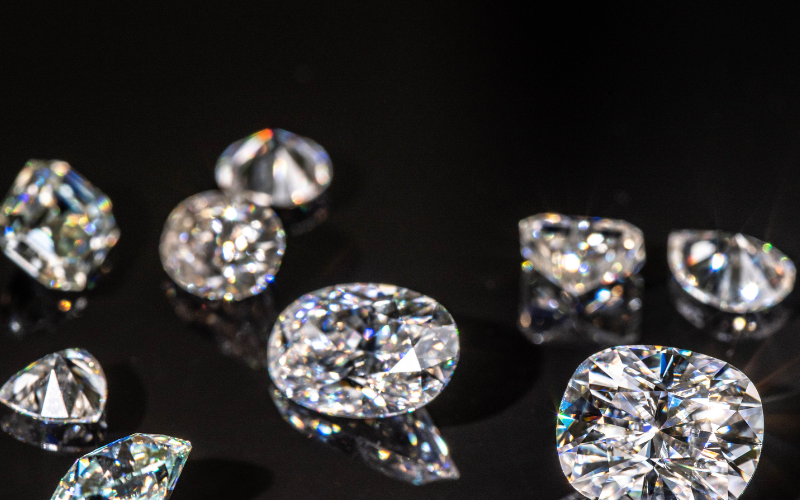Understanding diamonds, the 4C's is definitely the first thing to clarify - 4C represents Carat, Color, Clarity, and Cut. These four factors are the most important elements that affect the grade and price of a diamond. Of course, those who are well-informed may be aware that there is another factor that influences the price - Fluorescence. Today, we will explain the introductory knowledge all at once.
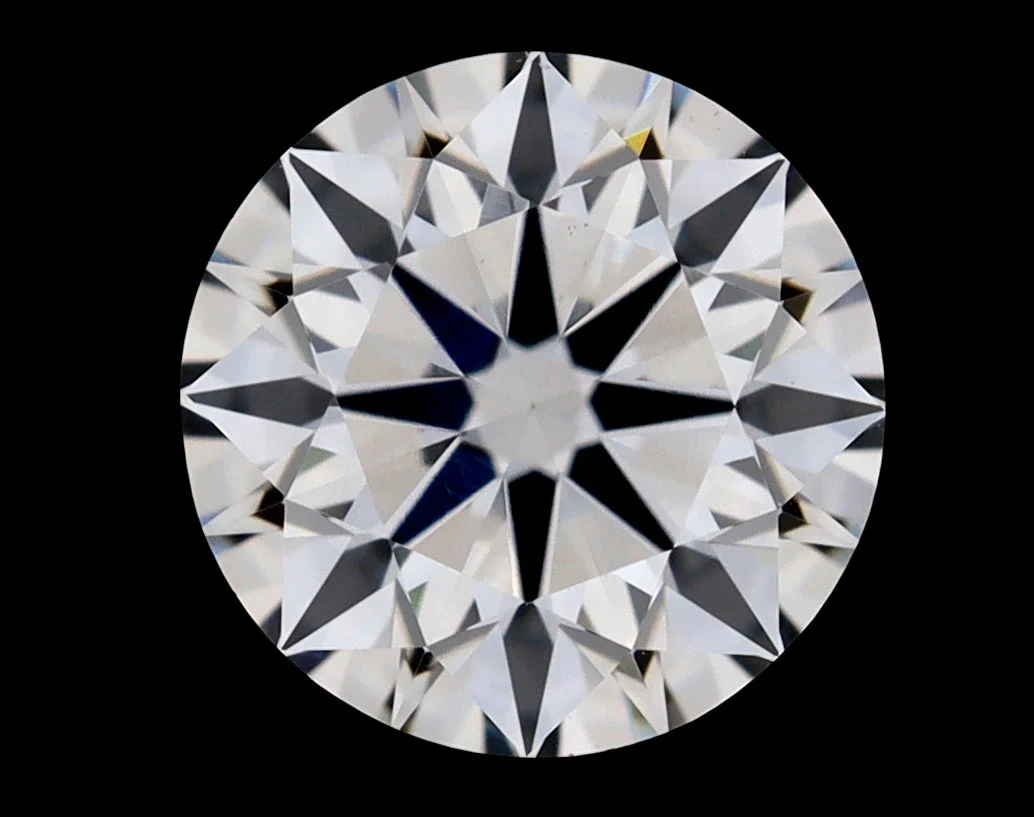
The left image shows a 1.5-carat D color, 3EX (Excellent) cut, VS2 clarity, non-fluorescent diamond.
Color: There are more options than just DEF in the world
Clarity: As long as there are no obvious black spots on the table, it's considered good
Cut: There's no other choice; for engagement rings, it's always 3EX (Excellent)
Carat: The difference between one carat and two carats is not just double, but constantly increasing (exponential)
Fluorescence: It's common but has much less impact than you might think
Color: There are more options than just DEF in the world
Diamonds can naturally occur in various colors, including colorless, yellow, red, blue, pink, and more. However, when referring to the color aspect of the 4C's of diamonds, it generally pertains to the grading of colorless diamonds by the GIA (Gemological Institute of America). The GIA grades colorless diamonds on a scale ranging from D to Z.

The image above shows the grading scale for colorless diamonds according to the GIA official website.
Generally, in the market, colorless diamonds are further divided into five categories: Colorless, Near Colorless, Faint, Very Light, and Light. Below is a brief introduction to these categories:
D-F Grade: Colorless
D grade represents the highest color grade, indicating a completely transparent diamond with no color. It is the rarest type of diamond. E and F grades are in the same category and have a minimal amount of color that is difficult to detect with the naked eye. They are also highly valuable.
G-H Grade: Near Colorless
Diamonds in this grade are very close to being colorless. They are slightly less expensive than D-F grades but still considered precious.
I-J Grade: Faint Color
Diamonds in this grade have a small amount of color that can be seen upon close inspection. They are relatively more affordable.
K-M Grade: Very Light Yellow
Diamonds in this grade have a faint yellow color. With excellent craftsmanship, they can still be of good quality.
N-Z Grade: Light Yellow
Diamonds in this grade exhibit a noticeable yellow color and are suitable for customers who prefer yellowish diamonds. Generally, we recommend customers to choose diamonds in the D-H color range. This is because Hong Kong has high color standards, and color is an easily comparable factor among women. So, gentlemen, remember this recommendation.
Clarity: As long as there are no obvious black spots on the table, it's considered good
Remember that natural diamonds are formed in the earth's environment, so it's inevitable for them to have some degree of inclusions. When making a purchase, just keep the following in mind:
- No obvious inclusions visible to the naked eye.
- Inclusions do not affect the diamond's brilliance (fire).
If these two criteria are met, then you don't need to have strict requirements for clarity. Now, let's discuss the different clarity grades of diamonds.

The image above shows the grading scale for diamond clarity according to the GIA official website.

The image above shows the grading scale and origin of names for diamond clarity according to the GIA.
When purchasing an engagement diamond, we generally recommend a clarity range of VS2-SI2. Going higher in clarity is often difficult to perceive in practice, while lower clarity can certainly affect the diamond's brilliance. Many times, we come across customers in the market who show us GIA diamonds with SI1-SI2 clarity, claiming that the diamonds exhibit perfect images as shown in the GIA clarity grading scale, similar to the image below:
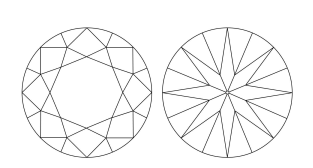
However, in reality, such images in the SI1-SI2 range represent the inclusions, especially when it comes to cloud-like inclusions. These clouds may be so large that they cannot be displayed in the image. Generally, SI1-SI2 diamonds of this kind can significantly affect the diamond's brilliance. While they may not necessarily appear milky, there can be differences in the level of brilliance compared to regular diamonds (it's always best to rely on the actual physical stone). Therefore, we still want to remind everyone not to pursue excessively low prices. There is a reason why GIA assigns SI1-SI2 clarity to these diamonds. Finally, let's introduce how different inclusions are displayed in the clarity grading scale image on the GIA certificate.

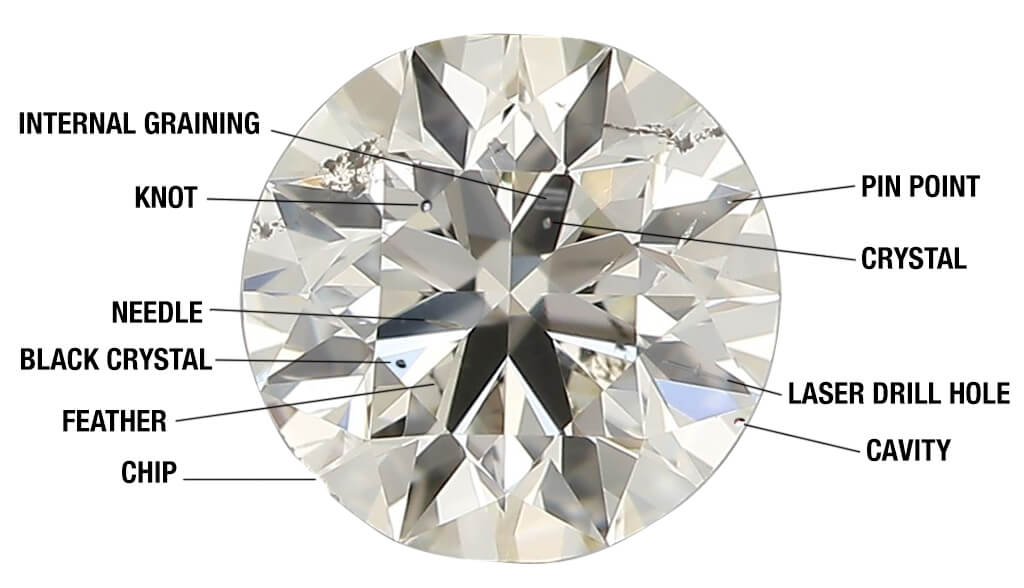
To summarize our understanding of clarity, inclusions can come in various forms. The most important thing is to start by examining the 360-degree image. Generally, if the inclusions are only very slight and barely visible in the 360-degree image, the diamond itself should not have significant issues. However, it's important to remember to compare at least two or more diamonds to ensure that the desired diamond has sufficient brilliance. This is the key aspect of a diamond.
Cut: There's no other choice; for engagement rings, it's always 3EX (Excellent)
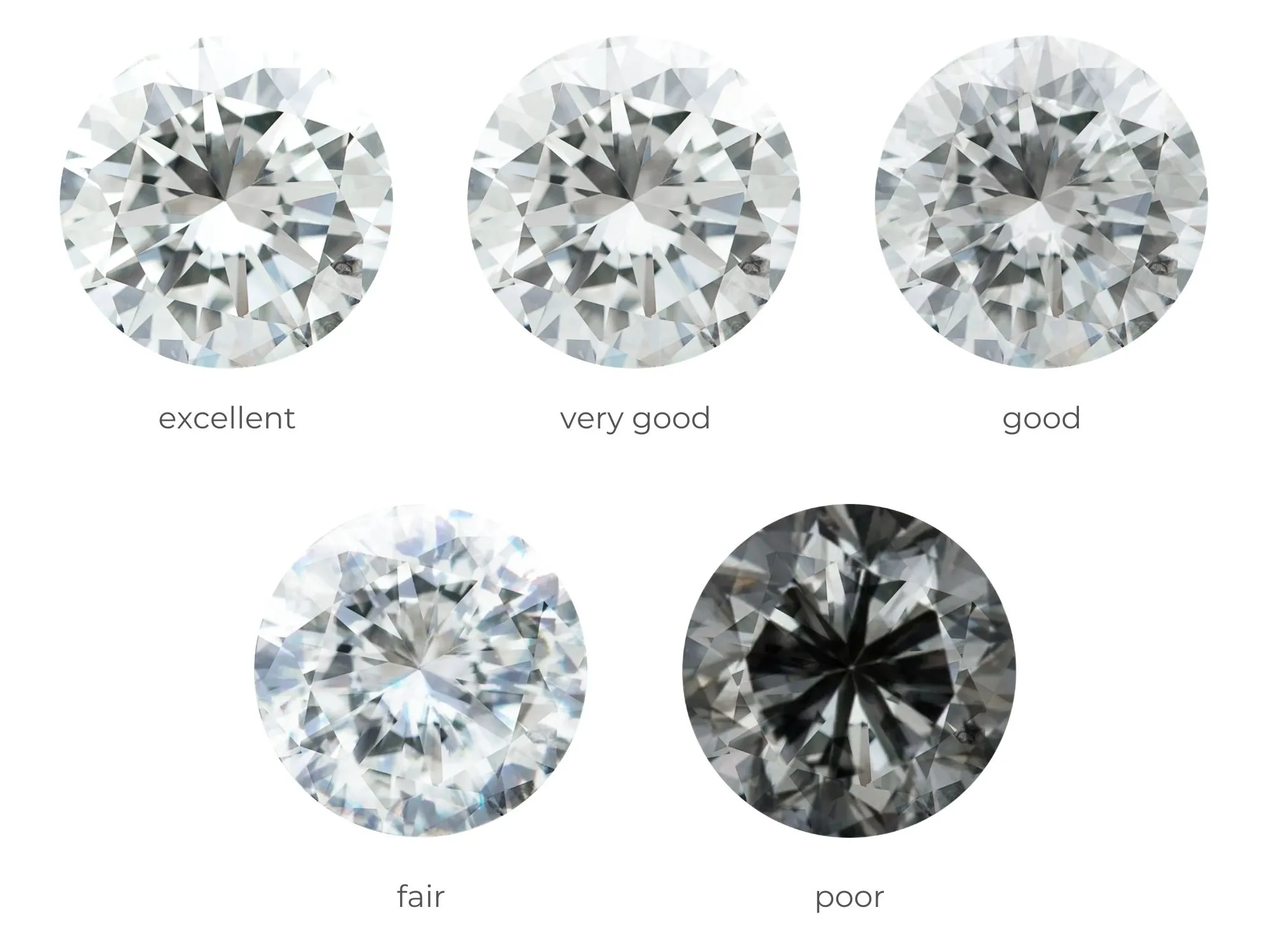
The above image demonstrates the effects of different diamond cuts.
The cut is the most significant factor that affects a diamond's brilliance. GIA provides opinions on various factors related to the cut of each diamond, and the proportions of the cut can vary significantly. Generally speaking, as long as the cut achieves an "Excellent" rating, it represents the diamond's optimal level of brilliance, sparkle, and light performance. However, it's important to remember that since each diamond has 57 facets, there are subtle variations and differences among them. This is why some diamonds exhibit the optical pattern known as Hearts and Arrows, while others may not have a complete Hearts and Arrows pattern. This does not necessarily indicate a difference in the quality of the diamond's cut, but rather how the 57 facets interact to produce the Hearts and Arrows effect.
However, in general, unless the customer has no intention of setting the diamond into a finished piece of jewelry, the so-called Hearts and Arrows effect does not hold significant meaning once the diamond is set. Therefore, while pursuing a Hearts and Arrows diamond is possible within a budget, we generally advise customers to focus on carat weight and clarity.
Carat: The difference between one carat and two carats is not just double, but constantly increasing (exponential)
It's important to understand that diamonds with large carat weights are extremely rare. As the weight of a diamond increases, the requirements for color and clarity also become higher. So, don't assume that a two-carat diamond is simply twice the size of a one-carat diamond! Of course, the market offers diamonds at various price points, but it's crucial to ensure that you have a clear understanding of the market before making a decision. If you need assistance, feel free to reach out to us at any time.
Fluorescence: It's common but has much less impact than you might think.
Don't blindly believe that fluorescence will turn a diamond into a milky stone. Essentially, except for diamonds in the DEF color range, strong blue fluorescence may potentially affect the diamond's visual transparency. However, even for experts, fluorescence cannot be distinguished with the naked eye. In fact, GIA evaluates fluorescence based on its reaction under UV (ultraviolet) light. Unless you and your partner frequently spend time in environments with UV lighting, no one can determine the fluorescence level of your diamond ring without the use of specialized instruments.
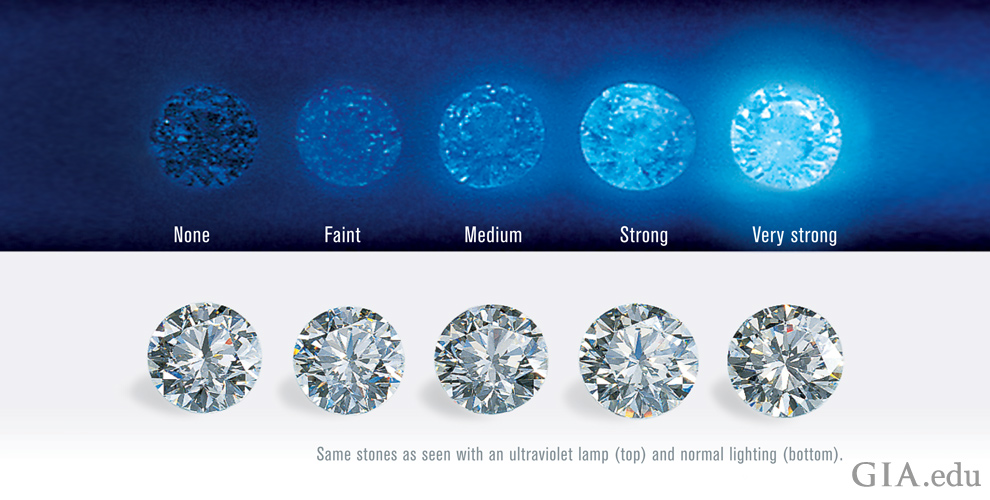
The image above shows the GIA official website's grading for diamond fluorescence, which are:
-
None (no fluorescence)
- Faint (slight fluorescence)
- Medium (moderate fluorescence)
- Strong (strong fluorescence)
- Very Strong (very strong fluorescence)

